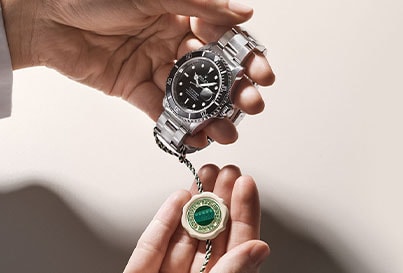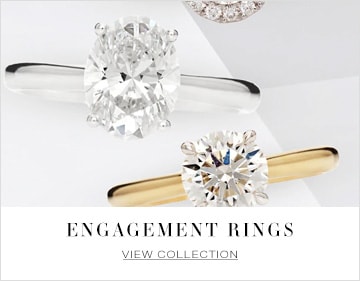-
Watches
By Category
By Collection
By Brand
- Rolex
By Category
By Collection
- Rolex Certified Pre-Owned
- Pre-Owned & Vintage
- Brands
Watch Brands
Jewelry Brands
- Jewelry
By Metal
By Gemstone
By Collection
By Brand
- Engagement
By MetalBy StyleBy Cut/ShapeBuild Your Ring- Wedding
By MetalWedding Jewelry- Sale
- Sell Your Watch
Sell Your Watch
We will expertly assess your watch and offer you
a competitive and accurate valuation for the
watch you wish to sell to us.Free valuation by our experts
Unrivalled knowledge & expertise
Competitive prices offeredBrands we buy
A. Lange & SohneAudemars PiguetBlancpainBreguetBreitlingCartierIWC SchaffhausenJaeger-LeCoultreLonginesOMEGAPatek PhilippeRolexHeuerTudorVacheron Constantin- Stores
- Rolex
- Shop by Category
-
Watches
- Back
- Shop All Watches
- By Category
- By Collection
-
By Brand
- Rolex
- Angelus
- Arnold & Son
- Berd Vay'e
- Blancpain
- Bovet
- Breitling
- BVLGARI
- Cartier
- DOXA
- Girard-Perregaux
- Grand Seiko
- Hamilton
- H.Moser & Cie
- Hublot
- ID Genève
- IWC Schaffhausen
- Jacob & Co
- L’epee 1839
- Longines
- Luminox
- Nivada Grenchen
- OMEGA
- Oris
- Panerai
- Porsche Design
- QLOCKTWO
- Rado
- Raymond Weil
- Reservoir
- Speake Marin
- TAG Heuer
- Tissot
- Tudor
- Ulysse Nardin
- William Wood Watches
- WOLF
- Zenith
- Rolex
- Rolex Certified Pre-Owned
- Certified Pre-Owned
-
Brands
- Back
- View All Brands
-
A-Z
- Rolex
- Angelus
- Arnold & Son
- Berd Vay'e
- Bijoux Birks
- Blancpain
- Bovet
- Breitling
- BVLGARI
- Carlex
- Cartier
- CHANEL
- Di Modolo
- DOXA
- FOPE
- Girard-Perregaux
- Grand Seiko
- Gucci
- Hamilton
- Hearts on Fire
- H.Moser & Cie
- Hublot
- ID Genève
- IWC Schaffhausen
- Jacob & Co
- J Fine
- John Hardy
- L’epee 1839
- Longines
- Luminox
- Marco Bicego
- Massena LAB
- Mayors
- Messika
- Mikimoto
- Nivada Grenchen
- Nouvel Heritage
- OMEGA
- Oris
- Panerai
- Parmigiani Fleurier
- Paul Morelli
- Pasquale Bruni
- Penny Preville
- Pomellato
- Porsche Design
- QLOCKTWO
- Rado
- Raymond Weil
- Reservoir
- Roberto Coin
- Speake Marin
- Tabayer
- TAG Heuer
- Tissot
- Tudor
- Ulysse Nardin
- Uneek
- Vhernier
- William Wood Watches
- WOLF
- Yeprem
- Zenith
- Jewelry
- Engagement
- Wedding
- Sale
- Sell Your Watch
- Stores
- My Account
- Wishlist
- Store Finder
- Request an Appointment
- Help & Support
Customer Care
Information
About Mayors
Diamonds: The Lowdown
Flowers? They’re fine. Shoes? Can never have too many. But when we want to really mark a moment – ensuring we look back on it with love, with happiness, with unadulterated, utter delight – a diamond is the ultimate souvenir. This is why they’re so associated with that quintessential never-to-be-forgotten moment, the marriage proposal.
All the more reason, then, to make sure the diamond you choose is everything you want. So we’ve put together this simple, straightforward guide to picking the perfect stone.
With diamonds, it’s all about the four Cs – cut, colour, clarity and carat weight.
Cut
A dress is nothing if it’s not cut properly, and the same is true of diamonds. Weeks, or months, of painstaking work go into cutting and polishing them so that they catch the light just so.
In fact, the way a diamond is cut determines its brilliance, dimensions and finish. The better its cut, the better it handles light, giving it more sparkle and brilliance.
Colour
Just like with our wardrobe, the colours of diamonds are all important. They come in an amazing array of often rare and very valuable colours, from yellows, blues, through pinks and greens. Naturally-coloured diamonds are much sought after and they don’t come cheap, either. But the rarest, and of course most highly-prized of all, is the totally colourless.
Jewellers use the alphabet to grade diamonds, starting with D for that elusive colourless diamond, and moving through the alphabet the more visible the colour.
Clarity
Flawlessness: The complete and utter pinnacle of perfection, inside and out; a rare quality in anything but especially in diamonds.
This is how we judge diamond clarity. Does it have any identifying characteristics on the outside (fittingly called a blemish) or on the inside (an inclusion) The vast majority of diamolitnds contain miniscule inclusions. They won’t affect the beauty or durabiy of the diamond but the fewer and smaller the inclusions, the greater the sparkle.
After flawlessness, there’s a scale of inclusions that can help you judge the diamond’s clarity and worth:
- Very, Very Small Inclusions Grades 1-2 (VVS1, VVS2) are internal flaws that are only visible under 10x magnification. These are also very rare.
- Very Small Inclusions Grades 1-2 (VS1, VS2) have inclusions which are not visible to the naked eye which means they’re very high quality.
- Small Inclusions Grade 1-2 (SI1, SI2) diamonds have small inclusions that may be visible to the naked eye but represent excellent value.
Carat
Something as special as a gemstone deserves its own system of measurement. Originally, they were measured with carob seeds, and this may be where the word ‘carat’ comes from. Carat weight is an easy way to compare diamond sizes, no matter what the cut.
One carat is 0.2 grams and less than five per cent of diamonds weigh more than a carat (in other words, only a few ladies will be carrying anything heavier than 0.2 grams on their finger).
Most diamonds are weighed in hundredths of a carat, or ‘points’. So, 25 points is a quarter of a carat, or 0.25 carats.
Certification
Some diamonds carry a certification that includes an analysis of their dimensions, clarity, colour, polish, symmetry and other characteristics. The certificates serve as proof that they have undergone an unbiased, professional examination, and that they can be traced back to suppliers who comply with the UN-mandated Kimberley Process.
Daily Care of Your Diamonds
Diamonds may be the hardest substance known to man, but they can still get scratched and damage. Here are some tips on how you can make your diamond really sparkle:
- Avoid contact with chlorine bleach, which can pit or discolour the mounting.
- Avoid wearing your diamond while doing heavy work – diamonds are hard, but can still be chipped by a hard blow against the grain.
- Diamonds can scratch each other, as well as other stones and metals, so keep them separate from your other jewellery to avoid damage. To clean your diamonds, brush them gently with a clean toothbrush in a bowl, of warm, liquid detergent suds. Then rinse through a wire strainer before patting dry with a soft, lint-free cloth.
Ask Us Anything
We’re always happy to answer questions you have about your diamonds, jewelry and watches. For advice on care, cleaning, valuation, servicing and repairs use our store locator to contact your nearest store or make an appointment.



